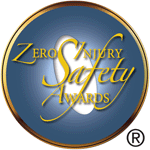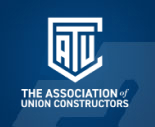Criteria To Win

25th Annual Zero Injury Safety Awards ® Gala
Thursday, October 16, 2025
The Mellon Auditorium
1301 Constitution Avenue NW
Washington, DC 20240
Objective
To ensure contractors, industrial business owners/clients and building trades Crafts whose projects achieve the NMAPC Zero Injury Standards specified are recognized under the NMAPC Zero Injury Safety Awards Program.
Eligibility
This award is open to all contractors, industrial business owners/clients and building trades crafts on projects performed under the terms of the National Maintenance Agreements or National Power Generation Maintenance Agreements program.
Before applying contractors must have reported the NMAPC work hours for the selected project SER(s) .
Specificity
All awards are for work on a single project, for a single identified owner/client.
Application Cycle
Award applications are accepted online starting in May of each year and are presented at the annual gala in Washington D.C.
Requirements and Guidelines
- The contractor must have a written company safety program that includes a management commitment to the Zero Injury philosophy.
- All work hours submitted must have been worked under the terms of the National Maintenance Agreements and/or the National Power Generation Maintenance Agreements only.
- Work hours submitted must be comprised of individual contractor direct hire craft hours on a single NMAPC project for an identified owner/client.
- An award is given to recognize injury-free work from the previous calendar year (ex: January 1, 2024 - December 31, 2024), or multiple years beginning with January 1, 2000, as long as the Agreements are in effect and the scope of work or project is or remains under the National Maintenance Agreements or National Power Generation Maintenance Agreements.
- Eligible projects must have zero OSHA recordable injuries. Projects with fatalities, days away, restricted or transferred (DART) cases or OSHA recordable injuries are not eligible.
- If you are submitting an application for more than one project, you must complete an application for each individual project.
- There is one application fee collected for all applications submitted. The fee will vary pending the categories of the applications submitted. Please submit all applications together to avoid multiple application fees.
Zero Injury Safety Award Categories:
Zero Recordable Award (200,000 or more hours)
An "NMAPC Zero Recordable Injury Plaque" will be awarded to the contractor, industrial business owner/client and building trades crafts where the project achieved 200,000 workhours or more, as follows:
- Bronze Star Award: For hours worked from 200,000 to 499,999 hours with Zero Recordable injuries, applicants will receive a plaque affixed with a Bronze Star and stating the number of hours worked recordable free.
- Silver Star Award: For hours worked from 500,000 to 999,999 hours with Zero Recordable injuries, applicants will receive a plaque affixed with a Silver Star and stating the number of hours worked recordable free.
- Gold Star Award: For hours worked of at least 1,000,000 hours or more with Zero Recordable injuries, applicants will receive a plaque affixed with a Gold Star and stating the number of hours worked recordable free.
Zero Recordable Certificate of Merit (under 200,000 hours)
An NMAPC Zero Recordable Injury "Certificate of Merit" will be awarded to the contractor, industrial business owner/client and building trades crafts where the project achieved less than 200,000 workhours, as follows:
- For hours worked from 50,000 hours up to 199,999 hours with Zero Recordable injuries, applicants will receive a certificate stating the number of hours worked recordable free.
ZISA Million Hour Project Recognition Program Criteria
- Scope and eligibility. In order to qualify, a minimum of one million aggregate injury-free hours must have been worked on the same project in a single calendar year by multiple eligible contractors (those who are signatory to either the National Maintenance Agreements or the National Power Generation Maintenance Agreements).
- Consideration for multi-year projects. Ongoing projects will be evaluated on a "calendar year" basis only. In order to achieve recognition in a subsequent year, contractors would need to again achieve a minimum one million injury-free hours.
- Who may apply. The owner/client, a general contractor or construction manager on the project may apply for the Million Hour Project Recognition. IMPORTANT: Construction managers must have a current "Letter of Understanding, Construction Manager Participation" on file with the NMAPC for the nominated project.
- Application requirements. The submitting entity will be required to list all eligible contractors along with their respective approved Site Extension Request (SER's) for the nominated project. The submitting entity shall provide copies of OSHA 300 and 300A forms for all eligible contractors. There is no minimum number of hours required for a contractor to be included in the application.
- Recognition limitations. A project can only be recognized under the ZISA Million Hour Project Recognition Program once per year.
- Relationship to other ZISA categories. Eligible contractors may still apply for individual ZISA awards under the current categories.
- Application fee. An application fee will be assessed for the administration of this program. The fee will be paid by the entity that submits the application. Fee rates are subject to change.
- Award presentations. Once verified, Million Hour Project Recognition awards will be presented at the annual Zero Injury Safety Awards Gala in October.
Recognition
Those organizations receiving an NMAPC Zero Injury Safety Award will be listed online, recognized in The Construction User magazine and will be honored at the annual Zero Injury Safety Awards Gala.
Zero Injury Safety Philosophy Defined
The National Maintenance Agreements Policy Committee, Inc. is based on a system of tripartite governance and cooperation, with owners/clients, contractors and building trades craft workers sharing equally in the responsibilities and rewards generated by the program. Owners/Clients, contractors and building trades craft workers performing industrial maintenance work who have committed to a zero injury and zero accident workplace are accomplishing the very highest level of safety performance. Indeed, there are frequent occasions where entire projects are accomplished without Lost Workday Cases and some projects are performed with Zero Recordable injuries.
A growing number of NMAPC contractors are achieving admirable safety records of hundreds of thousands of workhours with no (zero) OSHA Recordable injuries. Some have even achieved the remarkable record of more than 1,000,000 workhours without an OSHA Recordable.
While it is apparent in the records of these companies that these laudable performance levels are being achieved and injuries are rare, the "Zero Injury Safety Management Philosophy" does recognize that no contractor can work for all time into the future without an injury to a worker. However, the successful contractors have realized that "the fact that injuries occur does not mean that they must occur."
With that enlightened attitude, management and the workers have been able to eliminate injuries classified as OSHA Recordables for extended periods of time. Some with records extending to over one million workhours with Zero OSHA Recordable injuries. These contractors simply do not allow the fact "that an injury may occur someday" to keep them from embracing a safety philosophy commitment that all of us in our hearts want to happen in the workplace anyway - Zero Injury!
Basic to the Zero Injury Philosophy and common among these contractors is the view that no injury is treated as an acceptable event in the execution of the work. These contractors also have a commitment that they will do whatever it takes to prevent the next injury. In short, it is their performance expectation that there will be no injuries and line managers and workers alike are so informed.
The common testimony of craft workers on a successful Zero Injury work site is that they have never worked on a safer job and that they have never seen cooperation and attitude more productive.
The common testimony of management supervising Zero Injury projects is that they have seen no deterioration in job schedule, cost or quality. In fact most state that all these important factors actually improve on Zero Injury projects.
Regarding cost, once the very high cost of worker injury is no longer a productivity drain on project resources these saved dollars serve to offset increased costs needed to install the critical elements of a "Zero Injury" approach to project management. There is no project more cost-effective than one that is executed injury free.
The experience of the successful "Zero Injury" contractors is that there are a number of critical safety program elements that have been found to be a part of a "Zero Injury" project site. The most critical of these are listed below. It should be noted that these "Critical Elements" are not to be considered a replacement for a well-rounded progressive safety program but are to be used as powerful additions to such a safety program.
From the perspective of the NMAPC, Inc. this approach is one of the stated goals towards "Building a Partnership of Safety, Productivity, Quality and Strength."
Zero Injury Safety Management Critical Elements
It is the vision of the NMAPC Safety & Health Committee, that through a tripartite partnership consisting of owners/clients, contractors and building trades crafts, all three parties adopt a philosophy, which advocates a commitment to the idea that all injuries are preventable.
Each of these partners who perform industrial maintenance under the NMAPC program will be committed to this coveted level of performance in preventing all worker injuries and accidents on all NMAPC projects. In advocating the Zero Injury Commitment Approach in project and worker safety, the NMAPC, Inc. intends to make world-class performance in safety and health an additional benefit of performing work under the NMAPC program.
Zero Injury as a safety management process was the subject of a four-year research (1989-1993) project by The Construction Industry Institute (CII) in Austin, Texas. The results of this research project can be found in CII publication 32-1, entitled "Zero Injury Techniques."
The following are critical elements from that research effort. The final two items, 11 and 12, are powerful additions discovered in more recent years.
- Owner/Client, contractor and union senior leadership is committed to the zero injury concept. a) The owner/client expects a zero injury project. b) The contractor executives and all contractor management "buys in" and is in alignment on the management and worker action needed to achieve zero injury. c) Union leadership will facilitate and advocate that worker attitudes and actions are in concert with a zero injury work environment. (Experience has shown that the very best results are obtained when the owner/client, contractor and building trades craft workers are all active participants in the zero injury management process.)
- Worker safety is a line management responsibility and all management has the specific duty to avoid all injury to all employees.
- Safety personnel are available for a supportive role in advising line management regarding "best practices" and OSHA compliance requirements. Safety personnel are relied upon to conduct safety orientations and safety training sessions along with safety inspections and audits including keeping project management informed on "best practices" in conforming to all safety laws and standards.
- Pre-project Job Hazard Analysis (JHA) is done prior to commencing work on all projects.
- Pre-task planning (review of JHA) is to be utilized by foremen and workers on a daily basis and more often if new work assignments are undertaken.
- All project personnel are given a Zero Injury focused safety orientation prior to their beginning work on the project. Time spent in orientation varies by contractor. A mix of lecture and video presentations is used in this training. Contractor management as well as the owner/client are urged to assist.
- Specific safety classroom training is given as appropriate (not during orientation).
- Drug abuse testing is performed pre-hire. Also random, for cause and post accident testing are utilized. Testing for alcohol is included.
- Near misses or safety incidences are investigated immediately and corrective action taken. Investigation results are communicated throughout the workforce.
- Safety recognition systems are utilized on the project and commemorations are held when zero injury "milestones" are achieved.
- The Crafts input is sought and they are involved in analyzing "at-risk" behavior situations prior to beginning any new work and are empowered to act to insure their own safety and the safety of those around them.
- Craft conducted safety audits are utilized to understand the project's total exposure to injury. The safety performance data is consolidated and tabulated and charts are published for the workers.




